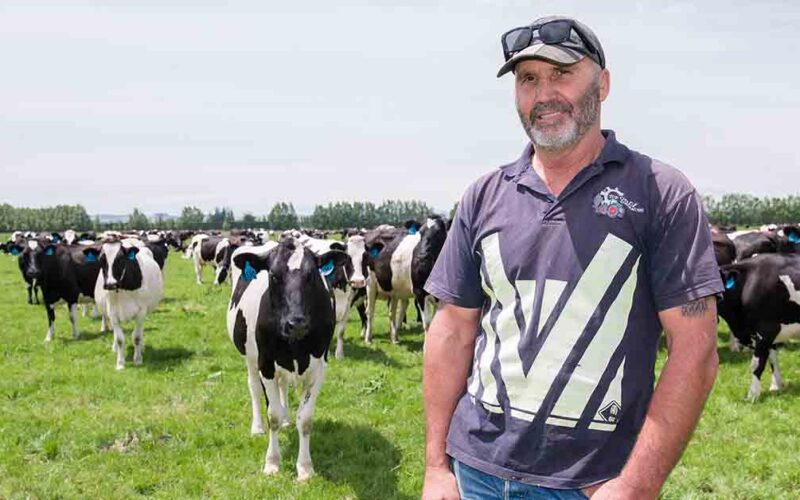The NZ dairy herd increased 82% between 1990 and 2019, with some of the largest increases in Canterbury and Southland. Neal Wallace investigates the future of dairying in those regions and talks to some innovators who are confident that with the use of technology and management changes, dairying has a future.
John van Hout has always been innovative with his nutrient management on his Southland dairy farm, an approach that is about to pay further dividends as regulations on nitrogen use are enforced.
Policies adopted by the Winton farmer have enabled him to halve the volume of synthetic nitrogen used to 100 units a year, which underpins an approach of running fewer cows but feeding them better.
The nitrogen he does use, along with other fertilisers and agents, is applied in a liquid form at low rates over six applications throughout the year.
“Everything we put on is in a diluted form, so it sits on the leaf and the plant takes it up as soon as it dries,” Van Hout said.
An eco-bag is being installed to meet the extra storage required by the new regulations, which will capture shed and barn effluent and be used to fertilise an area of the farm which has not previously had it applied.
The new system will also allow for methane capture, which could be used as an energy source in the future.
“It’s fertiliser and it is worth a lot of money,” he said.
Average pasture growth across his two farms is 16-17 tonnes DM/ha and his stocking rate is about 2.8 cows/ha, about 0.7 cows/ha below the district average.
Van Hout has a wintering barn on one property, capable of housing 660 cows, and he runs 340 cows on a second farm, where cows are kept outside.
The wintering barn gives him flexibility and control, allowing cows to be taken off paddocks when it is wet, effluent to be captured and it helps stretch out his milking season to 305 days.
Production from his 660-cow herd is 625kg/MS/cow and from the 340-cow herd it is 525kg/MS/cow.
He said it is possible to farm in a low nutrient environment, but it requires a different approach to herd management.
“You just need to think outside the square,” he said.
“You feed the cows and get high production per cow by having less mouths to feed.”
Read more articles in the special report series “Dairying has a future“






